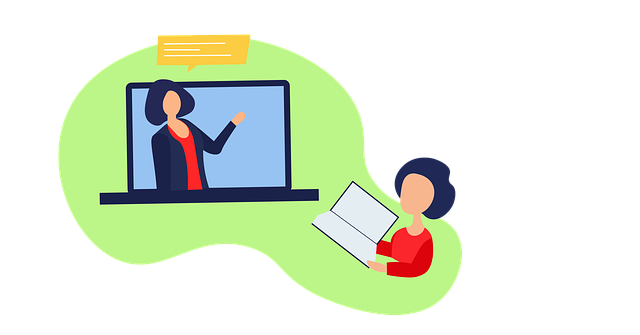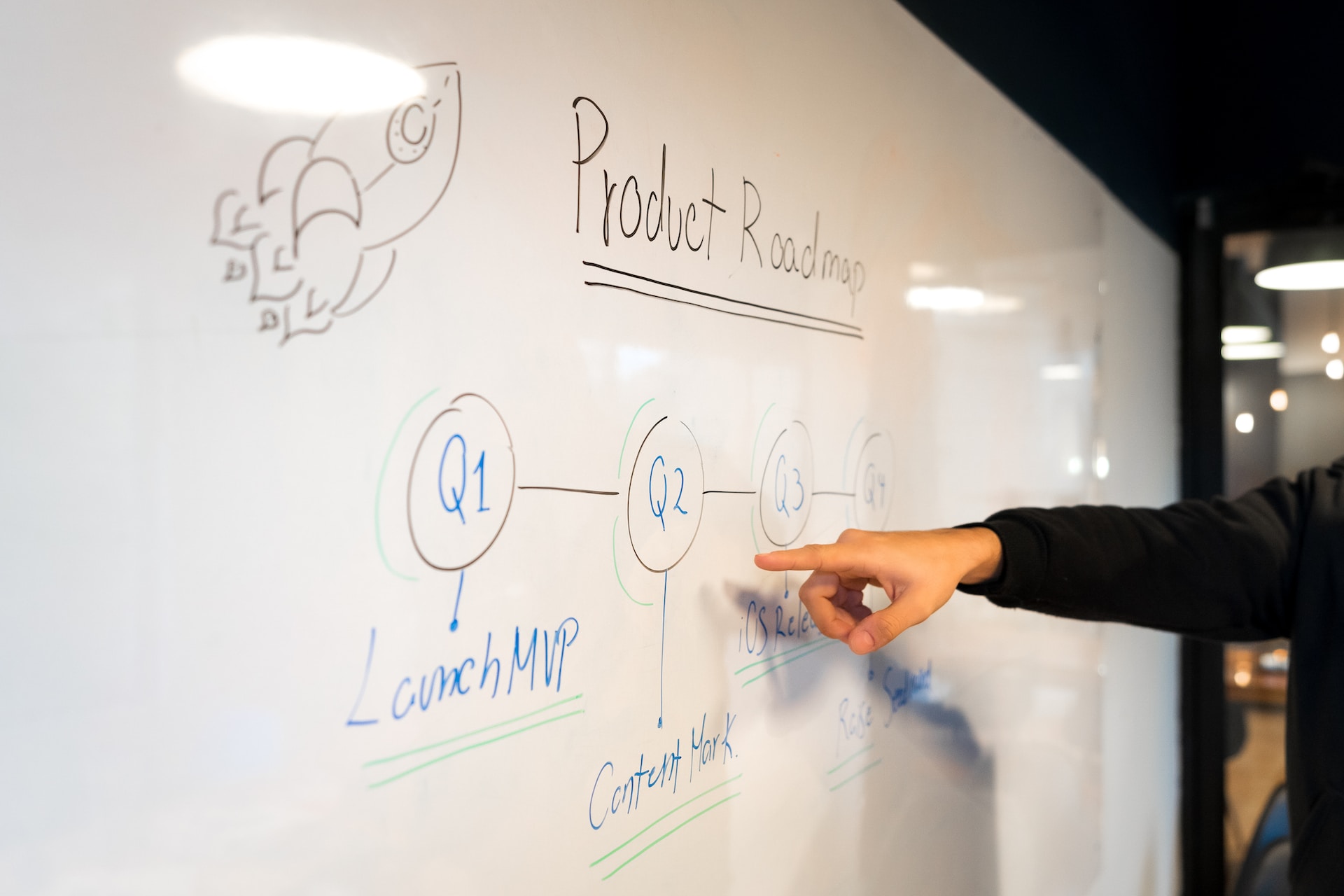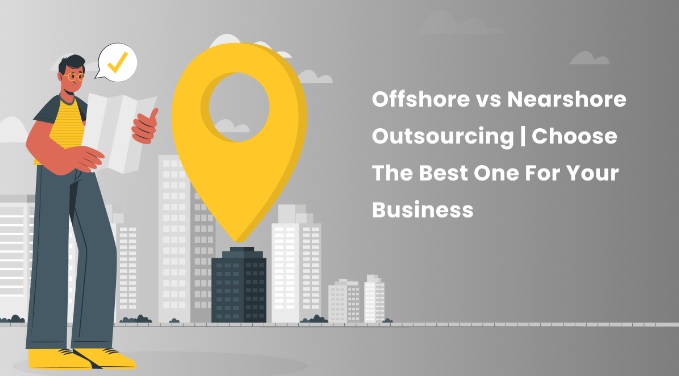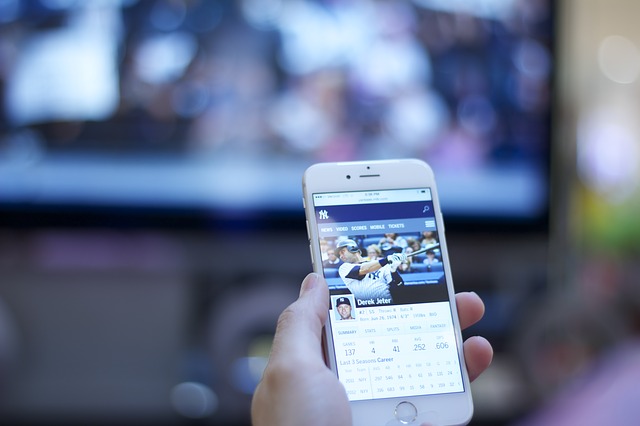Guest Post
The rise of the teacherpreneur
Published
2 years agoon
By
Alex Klein

Disruption in the education market
Over the past few decades, education has been radically transformed. Today, there are hundreds of millions of people learning things outside of the traditional classroom… things like yoga, fitness, dance… music, drama, art… languages, programming, business skills… we could call this the “alternative education” market.
But traditional academia, too, is experiencing massive disruption: enrollment in undergraduate and graduate programs has been declining since roughly 2012. More and more people are realizing that to learn something useful or to build a solid foundation for a career, they don’t have to pay the massive tuition that traditional “gatekeeper” institutions charge. All they need are some good teachers.
Covid19 and the associated lockdowns have only served to dramatically accelerate this transformation. All around the world, remote learning and remote employment became completely normalized during the pandemic. Even those (few) people who previously hadn’t used the internet much for anything beyond shopping are now very familiar and comfortable with Zoom.
It turns out that in the post-covid world, students actually prefer taking classes remotely. Online classes and e-learning are not only here to stay, but things are increasingly moving in that direction.
In 2021, the e-learning market surpassed $320 billion, and it’s projected to reach an astounding $1 trillion in 2028. The global online fitness market alone is predicted to increase at an annual growth rate of nearly 50%, from $11.4 billion in 2021 to $80 billion by 2026.
Teachers and instructors of all sorts make up the “passion economy“, which in turn is a subset of the so-called “creator economy” that includes millions of independent content creators. Creator economy startups which enable these content producers pulled in US$1.3 billion in capital investment in 2021, roughly three times more than in 2020.
These major changes imply that the outlook for schools, studios and institutions is bleak. With more and more people learning online, it’s no longer clear what role, if any, these brick and mortar businesses still have to play.
On the flip-side, the shift is good news for teachers, bringing massive opportunities to independent teachers and instructors. Because fundamentally, nothing has changed in the market: there are still hundreds of millions of people who want to learn or practice something with a teacher.
Startups in the passion economy
There are a number of tech companies that are gaining traction in the passion economy. Some are helping teacherpreneurs with marketing and finding new clients, as marketplaces for classes and courses. Some are helping instructors to manage their business and logistics with payment and admin solutions. And there are numerous products that facilitate new ways of monetizing the content that teachers produce. Below are just a few examples:
Tutoring marketplace: thousands of teachers in the United States are earning thousands of dollars each month teaching live, virtual lessons on Outschool, an online marketplace for live video lessons for children. These classes are taught primarily by former school instructors and stay-at-home parents.
Course creation: for alternative education subjects, Podia, Teachable, and Thinkific are three major SaaS platforms that enable educators to create and sell video courses and digital subscriptions. The top educator on Podia earns more than $100,000 a month.
Teacher admin solutions: for managing live classes (both in-person or online), there are already numerous platforms that have been in existence for many years — but they largely cater to schools or gyms that have complex requirements. This makes them prohibitively expensive and much too complicated for indie instructors. For example, MindBody Online is the most well-known class management platform for yoga studios and gyms — but it costs $300/month and requires a person to take a course to learn how to use it.
But some newer startups are focusing on the teacherpreneur opportunity. For example, an emerging player that’s exclusively designed for individual teachers is Ubindi. Billed as “simple software for teachers”, Ubindi satisfies the needs of educators who are not very tech-savvy, who don’t need complicated rocket-ship dashboards and who don’t want to pay for expensive bulky class management systems.
Other tools for teacherpreneurs: an interesting example of a platform that helps educators monetize their craft is Teachers Pay Teachers, an online marketplace where teachers buy and sell original educational materials that they create themselves.
The dawn of a new age
Professor Klotz at Texas A&M University coined the phrase “The Great Resignation,” forecasting a large number of people who will be abandoning their employment after the covid pandemic, simply because they are no longer happy doing things they don’t enjoy and not being very paid well for it.
The passion economy offers anyone with a skill or passion alternative ways of earning income, providing innovative paths towards both personal and financial freedom. People can pursue their interests and hobbies in ways that also allow them to earn a living.
And it’s not just about personal fulfillment: independent teachers are also finding that they can do very well financially. This is especially true when it comes to teaching online:
- When teaching from home, overhead and expenses are minimal.
- On the internet, the size of a potential client base is virtually unlimited.
- Independent teachers can keep virtually 100% of any revenue that students bring in — in stark contrast to how things used to be when teachers earned between 10 and 20% of the revenue collected by a gym or school.
In today’s world, it’s incredibly easy to set up and operate your own teaching business — one where you can teach exactly what you want and how you want. Teachers can pursue their passion on their own terms and enjoy the highest level of professional fulfillment as teacherpreneurs.
Alex Klein is a serial entrepreneur who’s founded multiple businesses in several countries. Currently, he's co-founder at Ubindi (https://ubindi.com), an admin platform that serves thousands of independent teachers around the world.


You may like


Getting a startup off the ground is becoming more challenging than ever. In addition to fierce competition and economic uncertainty, entrepreneurs looking to achieve startup success in 2024 should also account for consumers’ growing distrust of brands — especially in tech. Moreover, research shows that people expect more from businesses in 2023 and beyond — especially regarding social issues. That can be a slippery slope if core values grow into politicized messages that could turn audiences away.
For these reasons, business owners looking to achieve their goals in 2024 must arm themselves with bulletproof strategies for startup success.
So, if you’re looking for data-based guidelines on successfully running your organization in the coming months, here are the six best tactics to help you stay on the right path.
Embrace the Power of Generative AI
One of the most effective ways to improve your business results in 2024 (though you should start implementing this tactic as soon as possible) is to embrace the potential of generative AI.
With its many applications, AI genuinely has the potential to transform your operations into highly efficient, affordable practices that will allow you to spend your time where it matters the most.
For starters, begin by leveraging AI for marketing and customer service purposes. Employ AI for content research and (human-supervised) creation. Use it to upgrade your marketing campaigns on search engines, social media, and email. Incorporate it into your content distribution practices to minimize the time you spend scheduling. And use it to organize your insights and expertise into user-oriented resources your customers can use to troubleshoot issues or get more out of their purchases.
Moreover, don’t be afraid to use AI to optimize your landing pages. The easiest way to do this is to employ AI as a research tool that informs you of web visitor behavior on your site. However, if you want to take things further, you can leverage AI to implement personalization or conduct A/B testing.
Lead with Values and Purpose to Connect with Your Audience
Today’s consumers don’t just want to invest in products or solutions that do the job. Instead, research suggests that people want to support value and purpose-driven brands that follow ESG best practices.
According to PWC, 80% of buyers are more likely to purchase from brands prioritizing environmental issues. 76% choose to support businesses whose social values align with their own. And another 80% will buy from brands that stand up for governance. Furthermore, McKinsey found that, in 2022, people spent more on products with ESG claims than those without, showing that leading with values and purpose allows organizations to reach and connect with their audiences.
Balancing sustainability with profitability can be a challenge — especially for startups looking to break into competitive markets. However, if you understand your target audience’s pain points and priorities and have a solid grip on industry trends, you can ensure you opt for the best approach to your business, giving consumers what they want without sacrificing profits. This is where high-quality resources like the Smash.vc newsletter come in.
Reap the Benefits of a Remote, Hybrid, or Distributed Workforce
One of the tremendous advantages of running a startup these days is that you can hire next-level talent regardless of your location (or your budget, for that matter). Thanks to the rapid advancement of collaboration technology, organizations can now find and collaborate with experts from all over the world without worrying about productivity drops or communication obstacles.
Of course, leading a remote, hybrid, or distributed workforce isn’t always a walk in the park. It necessitates a strategic leadership approach based on clarity, trust, and respect. Nonetheless, if you want to lead your brand to success in 2024, don’t hesitate to choose employees based on what they bring to the table instead of just where they’re momentarily located.
Deliver Personalized Experiences
One of the non-negotiable conditions for achieving startup success in 2024 is delivering an outstanding customer experience. And according to research, that may just come down to personalization.
In a 2022 survey involving over 13,000 consumers, Salesforce discovered that 73% of buyers expect companies to understand and meet their unique expectations. Even more, 62% want brands to anticipate their needs. From this data alone, it’s evident that building a successful brand that inspires not just conversions but loyalty as well necessitates a strategic approach to personalization.
In addition to working in a way that demonstrates your understanding of customer needs, play around with tools that will help you personalize interactions with future and existing clients. These can be anything — from email marketing platforms with advanced segmentation and automation capabilities to cross-selling ecommerce add-ons. Nevertheless, try not to go overboard with collecting consumer data, as too much personalization can be just as bad (if not worse) than none at all.
Embrace Multi-Channel Retail
Omnichannel sales was one of the leading business trends in 2023. And it’s only going to get bigger in 2024.
According to Statista, social commerce is expected to reach $2.9 trillion in value by 2026. And if 2026 is too far ahead for you to look, consider the fact that last year, brands that ran campaigns on three or more channels saw a mind-boggling 494% higher order rate than those that only invested in a single one.
So, if you want your startup to have the highest chance of success, align your marketing, sales, and content distribution strategies with consumer behavior data. For instance, a good place to start is to learn about how most people begin their shopping journeys these days. According to Jungle Scout, 56% of US consumers start product searches on Amazon, 42% use search engines, 37% go straight to Walmart’s website, 25% conduct product research on YouTube, and around 20% use social media platforms like Facebook, Instagram, and TikTok.
Practice Frugal Decision-making
Lastly, as you endeavor to take your business further in the upcoming period, ensure you don’t get too ahead of yourself when making any decision impacting your finances.
Yes, earning impressive profits necessitates some degree of risk. However, keep in mind that slow-paced growth always outperforms rapid expansion — especially if you plan on building a business that will stand the test of time.
So, as you explore the best strategies for startup success in 2024, be sure to practice frugal decision-making. You can even go as far as to keep your business decisions on the traditional end of the spectrum. Sure, it may mean that your business won’t get where you want it to be in a matter of months. But if you consider the fact that almost 90% of all startups fail, slowing down your growth rate for the sake of a bit more security is the best decision you can make as an entrepreneur and leader.
In Closing
There you have it: six of the most impactful strategies to adopt for startup success in 2024.
Of course, don’t feel like you have to employ all of these tactics. After all, you know your business (and your target audience) best. And that means that it’s you who’ll have the highest chance of making profitable decisions.
Still, keep in mind that all six of the business approaches outlined above offer mainly benefits (with very few, if any, drawbacks). Thus, they have a super high likelihood of helping your brand progress — especially if you are consistent with how you employ them.
Guest Post
8 Reasons Why Content Creation Is Crucial for Startups
Published
7 months agoon
September 20, 2023By
Chloe Taylor

Startups are continuously looking for cutting-edge tactics to stand out and draw the interest of their target market in the ever-changing business sector. The development of content is one extremely effective instrument that has become a key component of this effort. The creation and distribution of material forms the foundation of a marketing strategy, helping to both attract and hold the attention of potential customers. In this article, we’ll go into eight incredibly persuasive arguments for why content production is a crucial component of a company’s success.
Building a Resonant Brand Identity and Amplifying Awareness
Firms receive a golden opportunity to build and present their individual brand identity through their media production process. Startups may masterfully explain their core values, mission, and unique selling propositions through finely written blog posts, captivating videos, and engaging social media updates. In addition to facilitating differentiation in a crowded market, the capacity to create a consistent and well defined brand identity also helps to build familiarity and trust among the target audience. This effective combination opens the door for increased brand awareness, giving entrepreneurs a particular advantage in a market teeming with rivals.
Cultivating a Citadel of Thought Leadership
Small businesses usually struggle with the problem of proving their knowledge and authority inside a certain industry. This is where the idea of creating media comes into play, giving entrepreneurs a vibrant platform to display their knowledge base and assume the role of thought leaders. Companies can climb the ladder of notoriety as authoritative voices in their chosen area by spreading intelligent articles, thoroughly researched whitepapers, and meticulously prepared industry analysis. As a result, prospective clients develop a sense of trust and confidence in the organization, which encourages them to see it as a helpful resource for advice and answers.
Nurturing Lifelong Customer Relationships
Impactful content development has a wider range of applications than only attracting new clients; it is crucial for maintaining and fostering connections with current clients. By utilizing content, business owners can easily engage their audience after the initial sale by providing insightful information, practical advice, and timely updates. As a result of such continual contacts, customers are more likely to be satisfied and to return to a business. Furthermore, these content-driven discussions usually result in meaningful discussions that help entrepreneurs gain invaluable feedback and ideas for future iterations. Likewise these contacts can present chances for cross-selling, up-selling, and individualized suggestions based on specific client requirements.
Propelling Organic Traffic Through the Roof
Search engine optimization (SEO) is the cornerstone of contemporary marketing tactics. Premium content acts as a powerful SEO tool, driving a spike in organic traffic to a startup’s website. The likelihood of landing a top spot in search engine results increases when entrepreneurs deftly produce material that resonates harmoniously with their target audience and effortlessly incorporates relevant keywords. In addition to increasing visibility, this also attracts people who are actively searching the internet for the specific answers that the firm is prepared to offer. Understanding the most effective content optimization strategies is crucial because of this. A rise in organic traffic can have a positive impact on domain authority, search engine rankings, and the number of people who find the organization’s material.
Enlightening the Audience Through Invaluable Education
The benefit of educational content is unmistakable, especially for startups that market cutting-edge goods and services. Firms can educate their customers about the diverse benefits that their products offer and the pain issues that they expertly alleviate through the strategic art of media production. This educational strategy not only helps the audience better understand the product, but it also equips them with the information they need to make wise purchasing decisions. Customers who are well-informed are more likely to convert and then become ardent brand supporters. An organization’s reputation as a dependable industry authority can also be strengthened by positioning it as a go-to resource through educational material.
Illuminating the Prism of Product/Service Value
Organizations sometimes struggle with the problem of explaining the intrinsic value of their products, particularly if they launch a market-changing idea. Startups have a wide range of chances to showcase the useful applications of their goods or services thanks to material development. They can vividly demonstrate how their solutions smoothly resolve real-world problems and improve the quality of life for their clients by arming themselves with meticulous guidelines, immersive tutorials, and fascinating case studies. Additionally, demonstrating the worth of goods or services through content can help overcome objections and inspire trust in prospective clients.
Harnessing the Enormous Potential of Social Media Engagement
Social media has evolved into a powerful channel for customer connection and business promotion in the contemporary digital age. When used skillfully, content marketing enables startups to control an engaging and active social media presence. Companies may keep a firm hold on the audience’s interest and engrossment by arranging a symphony of varied elements, ranging from aesthetically pleasing photos to educational and compelling films. A firm’s exposure and reach could soar to incredible heights thanks to the possibility for material in this active social media space to go viral. In addition, participating in social media can promote in-the-moment conversations that let entrepreneurs respond individually to questions, worries, and comments.
Flexibility in Formats to Cater to All Tastes
As a flexible tool, producing material gives companies the freedom to test out a wide range of formats that are all made to appeal to different audience preferences. Startups can easily tailor their material to align with the preferences of their target audience, whether it be the timelessness of blog posts, the mesmerizing allure of videos, the immersive appeal of podcasts, the succinct efficacy of infographics, or the interactive nature of webinars. This versatility enhances the entire user experience while expanding the organization’s audience and successfully navigating a variety of platforms and channels.
Content production stands out as an unquestionable pillar of success for startups negotiating the complex terrain of the contemporary business scene. Companies that are at the forefront of creating valuable, timely, and engaging material are in a prime position to build relationships with their target audience, eventually establishing them as preeminent industry leaders and moving them up the scale of sustainable growth.
Guest Post
Offshore Vs. Nearshore Outsourcing – Ideal Approach for Business Growth
Published
7 months agoon
September 18, 2023

The means of recruiting business personnel have significantly evolved. By outsourcing their digital needs, firms have gained more control of their processes and improved their productivity. It has allowed organizations in various industries like Insurance and IT to rely on international or nearshore teams to draw upon their services.
Outsourcing software development is a great way to improve business performance and quickly scale up operations. Keeping costs low while staying at the forefront of innovation is a priority and outsourcing can help you achieve this goal.
According to Statista, the IT outsourcing market is projected to reach $587.3 billion by 2027. It is essential to understand the differences between nearshoring and offshoring remote team models – two main types of outsourcing, to reduce costs and speed up the production of digital products.
Offshore Vs. Nearshore Outsourcing: An Overview
Both offshore and nearshore outsourcing involves hiring foreign workers for projects. With nearshoring, the countries involved are nearby, such as having an American IT firm hire staff from Canada. For offshore outsourcing, the firms are farther away from one another, like a Mexican company hiring developers from Poland, India, or Ukraine.
Offshore Software Development Outsourcing provides the opportunity to draw from a larger pool of experts at a much lower cost, yet there is no control. Going with a nearshore developer means a client can outsource processes or tasks to a partner company while still in an excellent geographic area.
Nearshore development presents a compromise, with the team being close enough for direct communication and onsite visits yet offering similar cost savings as offshore teams.
Reason to Select Offshore Outsourcing
Outsourcing works best for Startups to benefit from the lower wages software developers charge. According to reports, India is a popular choice for Offshore outsourcing services, with developers charging just $7.24 an hour.
In addition to money-saving measures, offshoring grants access to a global pool of talented workers – something that may not be easy to achieve in a country like the US or the UK.
There are many excellent examples of offshore outsourcing companies with experienced developers, providing access to a wealth of knowledge and existing skills. Accessing such know-how helps streamline the app creation process in getting it to market quickly and efficiently while minimizing the risk of common pitfalls.
Prominent Limitations
Before deciding to outsource to a distant vendor, you should take note of some potential disadvantages such as,
- Time zone differences could challenge direct conversations and urgent decisions with an offshore IT provider based in India compared to a US-based startup.
- Additionally, there is the potential risk of misunderstanding due to differences in language and culture. This could extend the timeline for development and cancel out any potential cost advantages.
To avoid these issues, many US-based companies outsource to vendors in Eastern European countries like Ukraine or Poland, where cultural similarities are more likely to result in fewer communication issues.
Reason to Choose Nearshore Outsourcing
Through nearshoring, it is feasible to organize face-to-face gatherings between the startup and outsourced workers. It gives you an easy way to convey the project particulars to the programmers.
Furthermore, you can circumvent the potential issues of linguistic and cultural discrepancies. Eastern Europeans typically have a better grasp of English and more similar business cultures, making nearshoring a smooth process.
Moreover, nearshoring lets you maintain stricter security over the app and related information. It is especially crucial when a company needs to comply with data protection regulations. For instance, Eastern European countries like Poland and Romania are under the GDPR’s regulation. If you are starting a tech business in the UK, contracting with outsourcing companies in the EU zone has advantages regarding understanding data privacy rules.
Possible Limitations
- Nearshoring may not always be the least expensive option regarding development costs.
- It ultimately depends on the country to which services are outsourced and the associated cost of living.
- For instance, Eastern European developers may charge between $50-$99 per hour depending on their expertise, whereas developers from Asia usually demand more than $35 per hour.
Nevertheless, even though offshoring may provide the most significant cost savings, nearshoring has the advantage of operating in more convenient or comparable time zones.
Significant Differences Between Offshore Vs. Nearshore Outsourcing
Now that we know about nearshore and offshore outsourcing, let’s compare the significant differences across different aspects.
Timezone
Regarding outsourcing, the time zone difference between nearshoring and offshore is significant. With nearshoring, it is possible to have teleconferences within working hours or meet in person. However, the distance may be an issue for offshore outsourcing partners as these can be eight or more hours away, making it difficult for real-time collaboration.
Specialist Selection
Nearshore vs. offshore outsourcing differs in the available talent pool. With nearshoring, clients are limited to traditional domestic solutions. At the same time, those seeking offshore outsourcing have access to a much broader collection of skilled personnel that they can recruit from all over the world.
Nearshoring may limit your search to 5-10 potential candidates while with offshore outsourcing, it can expand to 30-50 experts for your required skills. Additionally, finding highly specialized personnel for projects that may not be readily available in the local market is often easier with offshore outsourcing than nearshoring.
Cost
Nearshore outsourcing is a cost-effective solution compared to offshoring. Developers in London typically receive an annual salary of $70,000, while those in Eastern Europe can be hired for a more economical rate of $36,000 annually. Although offshore outsourcing manages your development work to countries such as India and China can be cheaper, nearshoring allows for a more substantial saving while still gaining access to low-cost labor.
Essential Culture Differentiation
Hiring offshore developers brings about various cultural differences, which can cause problems. For instance, US businesspeople commonly take a direct approach to communication. While those from China tend to be more restrained in expressing themselves, presenting logistical issues while working together.
Things to Consider for Selecting the Best Offshore Vs. Nearshore Outsourcing
When considering nearshore versus offshore outsourcing, keeping in mind certain things helps you select the best outsourcing.
- Deciding which skills are needed in the ideal employee for the project is essential.
- After identifying what you need and deciding your budget, research solutions on the market and compare the different talent pools of nearshore or offshore companies.
- Also, it is crucial to stay in contact with the developers in either type of outsourcing.
- In the case of offshore outsourcing, having a project manager to be the eyes and hands of the client is needed.
- Cultural differences can be expected, so it is essential to understand that somebody working differently does not necessarily mean they do a lousy job.
- Finally, rules and regulations should be set to maintain order. For guidance on this, a reputable outsourcing firm can help you.
Conclusion
In a nutshell, it is essential to carefully consider the type of team and project when deciding between offshoring and nearshoring. Both methods can deliver outstanding products with the latest IT tools and techs, but you should consider the cost and cultural needs when making a final decision.
Offshore solutions are more cost-effective and efficient for companies to introduce their products to global markets. At the same time, nearshoring provides a better fit in terms of cultural compatibility and can benefit highly specialized projects like video game development.


A Guide to Help You Find the Best AP Computer Science Tutor


Climate-smart Deeptech Company Ecozen Raises $30 M


BlackSoil’s Investment Grows 40% in FY24; Deploys $118Mn & Clocks 36 New Deals
Saad Kassis Mohamed led WeCare Raises $350000 for Lab-Grown Diamonds
UK-based fintech Nuke From Orbit raises £500k pre-seed funding to deliver smarter smartphone security
Japanese Fintech Leader Smartpay, partners with Chubb Insurance to accelerate digitization of the Japanese Insurance Industry, Anticipated to Surge to 80 Trillion Yen (USD $500 Billion) by 2027
Trending
-



 How to7 years ago
How to7 years agoHow to register a Startup in USA
-
Interview5 years ago
An Interview with Joel Arun Sursas, Head of Clinical Affairs at Biorithm, Singapore
-



 More4 years ago
More4 years ago6 Promising Up and Coming Fashion Companies
-



 More6 years ago
More6 years agoFactors to Consider When Planning Your Office Design and Layout
-



 Interview4 years ago
Interview4 years agoAn Interview with Russell Jack, Southland-based Yogapreneur and Mindfulness Teacher
-



 Other Internet Tech6 years ago
Other Internet Tech6 years agoHow to become an IPTV reseller? A beginner’s guide
-



 More6 years ago
More6 years agoIPTV business for beginners
-



 Business Ideas6 years ago
Business Ideas6 years ago50 Small Business ideas with low investment
